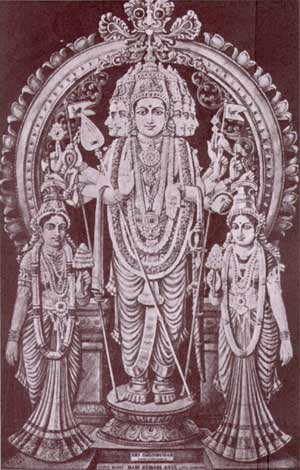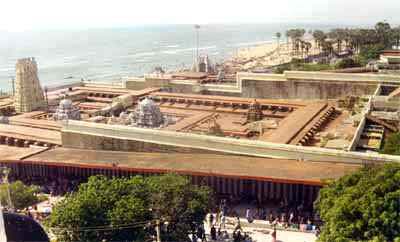Introduction to Skanda Shasti
 The Sanskrit word shat stands for number Six. Shasti, as such, denotes the sixth lunar day of both the waxing and the waning fortnight of the Moon. Of these, the sixth day of the waxing phase is considered auspicious for undertaking special worship and austerities. Hence, Shasti has come to represent the sixth day of Shukla Paksha, the waxing phase of the moon or simply, the sixth waxing moon. The Shasti that falls on the waxing phase of the Moon in the Hindu Lunar month of Ashwin (Oct- Nov) is observed as Skanda Shasti.
Significance of Skanda Shasti
Murugan, also known as Subrahmanya, Karttikeya or Skanda, is the son of Lord Shiva and his consort, goddess Parvati. He is a unique godhead, who remains the rare combination of matchless valor and supreme, divine intelligence. According to legends, it is on Skanda Shasti that Lord Murugan put an end to the demon, Surapadman. Hence, Skanda Shasti is regarded as very special for Murugan worship, when devotees observe vratam (fasting) for propitiating him and receiving his blessings.
Mythology behind Skanda Shasti
According to mythology, Surapadman was a demon, who obtained many boons, became quite powerful and started oppressing even the Gods. As desired by his parents, Lord Shiva and goddess Parvati, Murugan led an army of celestial beings against the demon forces and fought Surapadman, his henchmen and their mighty army.
The fierce battle ended on the sixth day, when Lord Murugan decisively defeated Surapadman and his evil forces, relieving the gods and the people, of his repression. This day is observed as Skanda Shasti. The grateful devotees remember the heroic feat of Murugan, sing his glory for the first five days, and on the sixth Skanda Shasti day, they undertake vratam or fasting and offer him special worship to commemorate his resounding victory.
This triumph is also enacted in many Murugan temples as Surasamharam, the annihilation of Surapadman, and is held with great enthusiasm in Tiruchendur, the seashore temple of Lord Muruga.
Rituals of Skanda Shasti Vratam (Fasting)
 Devotees install a picture or idol of Lord Murugan at home, decorate it with flowers, light a traditional lamp, preferably a ghee lamp and incense, make offerings of fruits and special delicacies like sweet pongal, and offer worship along with the reading and reciting of texts and hymns like Skanda Puranam and Skanda Shasti Kavacham. Some also worship the Vel or the lance, Muruganís principal weapon and also visit Murugan temples. Devotees begin the fast early in the morning and continue it till next day sunrise. Some observe Vrat on all the six days, from morning to evening. While a few go on complete fasting, some have only liquid diets, and some others, fruits. Refraining from other thoughts and purifying the mind only with spiritual thinking during fasting, is considered as important or even more, than abstaining from food. While the fasting is completed on the sixth Surasamharam day, Thirukkalyanam, the marriage of Lord Murugan with Indraís daughter Devasena, is celebrated on the next day.
Benefits of Observing Skanda Shasti Vratam
According to sacred texts, observing vratam (fasting) on Skanda Shasti can bestow the following benefits:
- Ward off negative energies
- Help to overcome impediments
- Achieve success in all endeavors
- Chanting of Skanda Shasti Kavacham hymn shall grant sound health and attract wealth
- Murugan is also the overlord of Mangal or planet Mars, and his worship can help to remove Mangal afflictions in the birth chart
- Bestow courage to face life with determination and win over problems
|